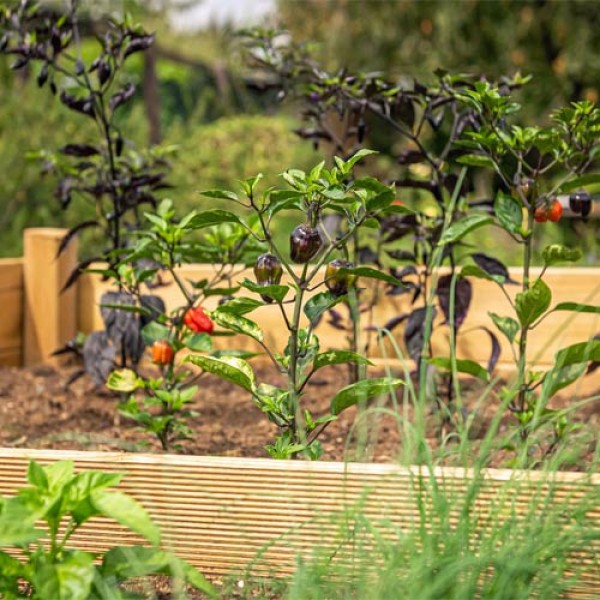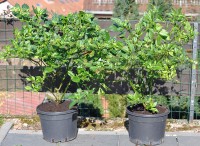
Raised Beds
Raised beds - which options are there?
There are many reasons for having high beds in the garden:
A raised bed offers the plants optimal growing conditions, is back-friendly for the gardener and sometimes harder to reach for slugs.
On the other hand, construction is time-consuming, it takes up quite a bit of space in the garden and the filling also has to be renewed after five to seven years.
Depending on preferences, requirements and conditions in the garden, there are various options:
Solid raised beds:
A raised bed that is to be used permanently in one location for growing vegetables can be built solidly from stones in the garden. If you want to remain more flexible, you may prefer a substructure made of wood, metal or plastic. There are often kits available in garden centres and DIY stores for self-assembly.
A raised bed made of stone is long-lasting and weather-resistant, but location-bound. Metal raised beds look stylish. Raised beds made of wood are often inexpensive, but rot more quickly and must be covered with raised bed or pond liner.
To prevent unwanted intruders such as voles and moles from damaging the raised bed, the bottom should be lined with a close-meshed wire mesh, e.g. "chicken wire" with a mesh size of 13 millimetres.
The benefits of a solid high bed are:
By layering it with compost and garden waste appropriately, you can take advantage of the heat generated by rotting to start cultivating very early. By using a top that provides protection on cold days, you can also use the raised bed as a cold frame.
Disadvantages: Solidly walled and massive raised beds need a lot of space in the garden. In addition, you have to construct them very high in order to maintain a back-friendly function. The filling must be renewed every five to seven years.
Example of layering for heavy feeding vegetables:
Generally, towards the top, the filling becomes finer and finer. The lower rough layer (approx. 20 cm) consists of coarse tree and shrub cuttings (branches, twigs, leaves). This is followed by 20 cm of mixed chopped material, brushwood, leaves and lawn cuttings. The bottom two layers must be well compacted so that the contents do not slump too much over time. This is followed by 20 cm of compost or garden soil mixed with manure. And finally fill in 20 cm of top soil or planting soil.
Standing raised beds:
In terms of size, material and models, there is a wide range of raised beds on stands in garden centers. Their advantage is that you can move them every year. Also, they have a really back-friendly height: you can dig, plant, weed and harvest while standing.The pesky slugs also take quite a long time to discover and reach the coveted lettuce in the raised bed. A border with copper tape on the stands usually keeps them away.
The cheapest stand-up raised beds are usually made of wood, which also need to be protected with a liner. Their smaller size makes them particularly good for balconies, terraces and small urban gardens.
Their layering differs somewhat from massive raised beds. The filling should not be too heavy and there should be no waterlogging. Therefore, start with a layer of expanded clay or perlite. Place a fleece on top of this drainage so that the layers do not mix. On top of this fill in a layer of compost, followed by garden or peat-free soil.
A beautiful, design-oriented solution for balcony and terrace is the Sammy Salad Raised Bed bed from Gusta Garden: It needs little space and can also be dismantled and stored in a space-saving way.












